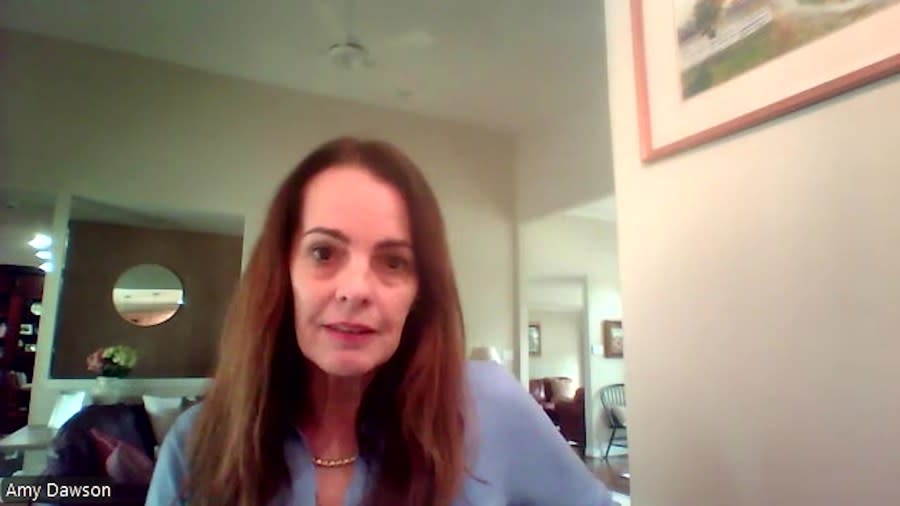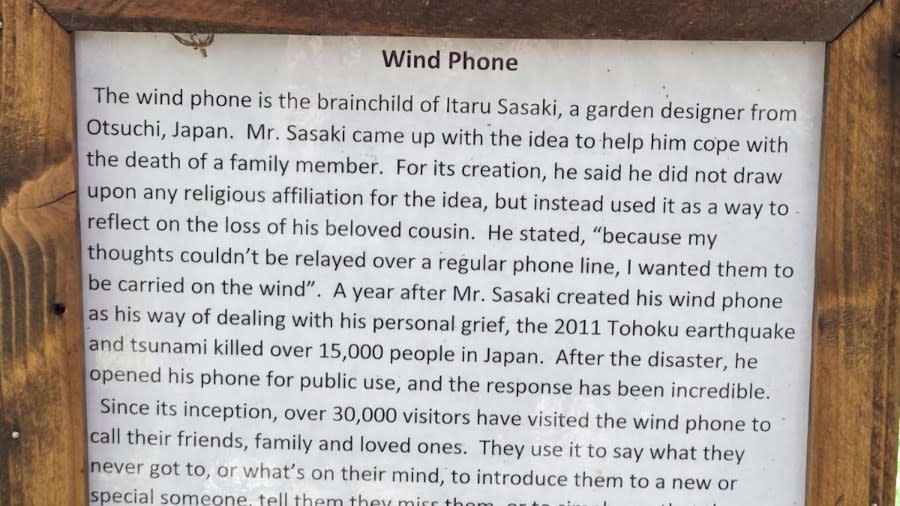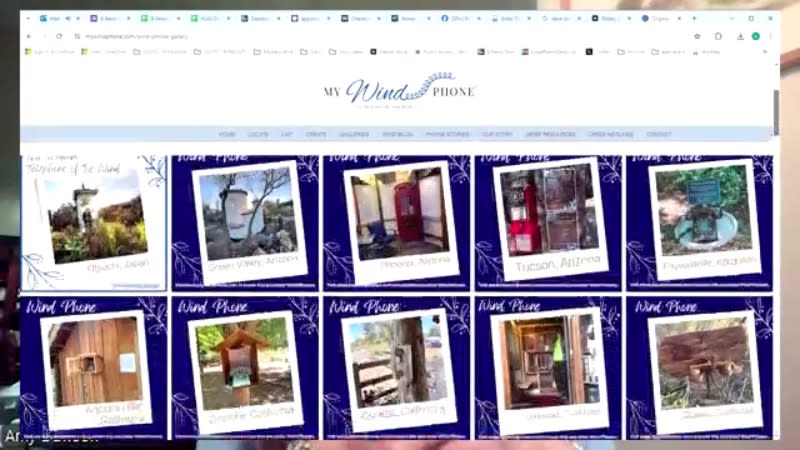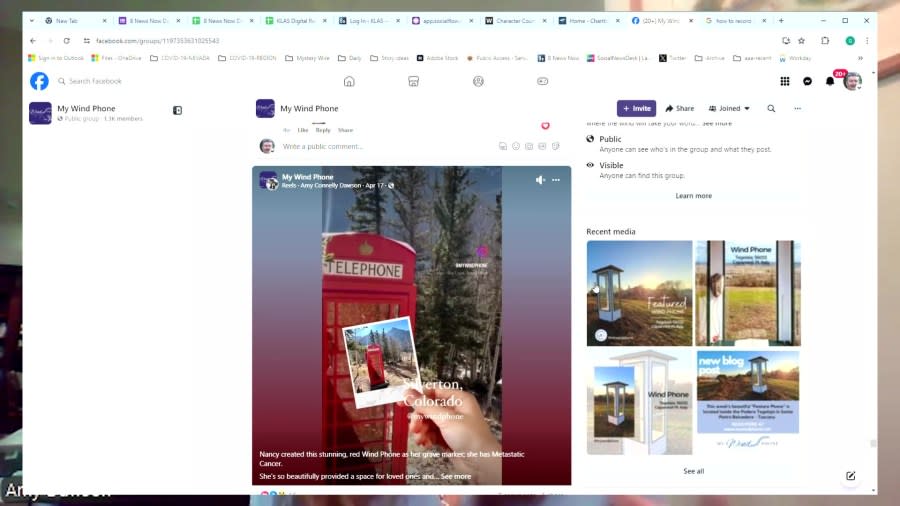Wind phones offer a way to grieve lost loved ones, and the movement is growing fast
LAS VEGAS (KLAS) — Everyone grieves in their own way, but have you ever thought of picking up the phone to talk to the people you have lost?
There are phones meant just for that. They are called wind phones.
Created in 2010 by Japanese gardener Itaru Sasaki, the concept has spread and taken root in the U.S., thanks in part to Amy Dawson. She maintains Facebook (a private group you can ask to join) and Instagram pages dedicated to the wind phone, as well as a blog and a map of locations of public sites around the country. Dawson said there are currently about 140 public wind phones in the U.S., and 13 more are coming soon. They’re also growing in Canada, and she counts 73 phones outside the U.S.

Dawson came to know about wind phones when she lost her daughter Emily in 2020 after a battle with a terminal illness. Through her support of the spread of wind phones, Dawson is now helping others grieve. And the reasons people grieve might surprise you.
“I speak on bereavement grief because that’s my personal side,” she said. But that’s not the only reason people pick up a phone to let out their feelings.
“People use wind phones for the loss of a job, a friendship, a relationship. I’ve had somebody recently say they went to a wind phone when their house was foreclosed,” Dawson said.
As the story goes, Sasaki created the first wind phone to mourn a cousin. “Because my thoughts couldn’t be relayed over a regular phone line, I wanted them to be carried on the wind,” according to plaques explaining the devices. A year later, the Tohoku earthquake and tsunami killed nearly 20,000 people, and he opened his phone for others to use. The devastating event killed about one of every 10 people who lived in the town of Otsuch, Sasaki’s home.

The idea behind the wind phone resonates with people, and Dawson spends most of her time every day helping to promote the effort.
She documents their stories with photos and video along with the reasons they were created. She tells of wind phones on the Adirondack Trail, in the Colorado mountains and the one she uses most on the campus of Princeton University.
“Helping others helps me, so to help people find a way to express their grief,” Dawson said from her home in New Jersey. “It’s one more tool, it’s a beautiful tool, it helps so many people.”
The locations closest to Las Vegas are in Wickenburg, Arizona, (235 miles) and Duarte, California (250 miles). In Wickenburg, the wind phone — in the style of a public pay phone mounted on a cottonwood tree — is inside the Hassayampa River Preserve, and it goes up every May in honor of Mental Health Awareness Month, according to employees there.
There might be private wind phones in Las Vegas, but Dawson doesn’t know of any public sites.
Dawson buys rotary phones to donate when she is contacted for help in setting up a new wind phone. They’re getting harder to find, and more expensive when she does find them. She recently sent one to Utah, but no word yet on where that phone will go.

“There’s something so therapeutic and helpful in saying it out loud into the phone. No one else is going to hear it. It’s a private space. And putting it out in the wind and having the hope or the belief that your person will hear it because the wind will have brought it to them,” Dawson said.
“I think if you take a telephone — and especially, the majority of wind phones are rotary phones — and so, most of us have that memory of dialing a number, hearing the number and the dial go backwards. We remember that sound from childhood,” she said.
Grief is private, but the COVID-19 pandemic encouraged more people to grieve out loud, according to Dawson. She said she believes the pandemic had a lot to do with the growing presence of the wind phone.
But that private nature of mourning adds importance to where the phones are placed. People should be in a quiet place, isolated enough that they can say what they want without being overheard. Gardens and natural settings make ideal spots, and Dawson’s website offers suggestions on what’s appropriate.
The personal expression that makes many of these sites remarkable runs the gamut from simple to elaborate.

Dawson relates the story of a Colorado woman who designed what amounts to a grave marker in the form of a British telephone box. The woman purchased a plot where she will be buried in the mountains near Silverton, Colorado, and the wind phone is there for people to talk to her after she’s gone.
Copyright 2024 Nexstar Media, Inc. All rights reserved. This material may not be published, broadcast, rewritten, or redistributed.
For the latest news, weather, sports, and streaming video, head to KLAS.

